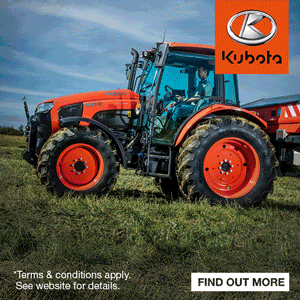2024 developments focus on precision
20th November 2023
At its recent pre-Agritechnica event, Vaderstad announced a series of precision equipment developments, ranging from updates to its planter range to new camera-aided inter-row hoes and there was a sneak preview of its forthcoming all-crop Proceed drill.
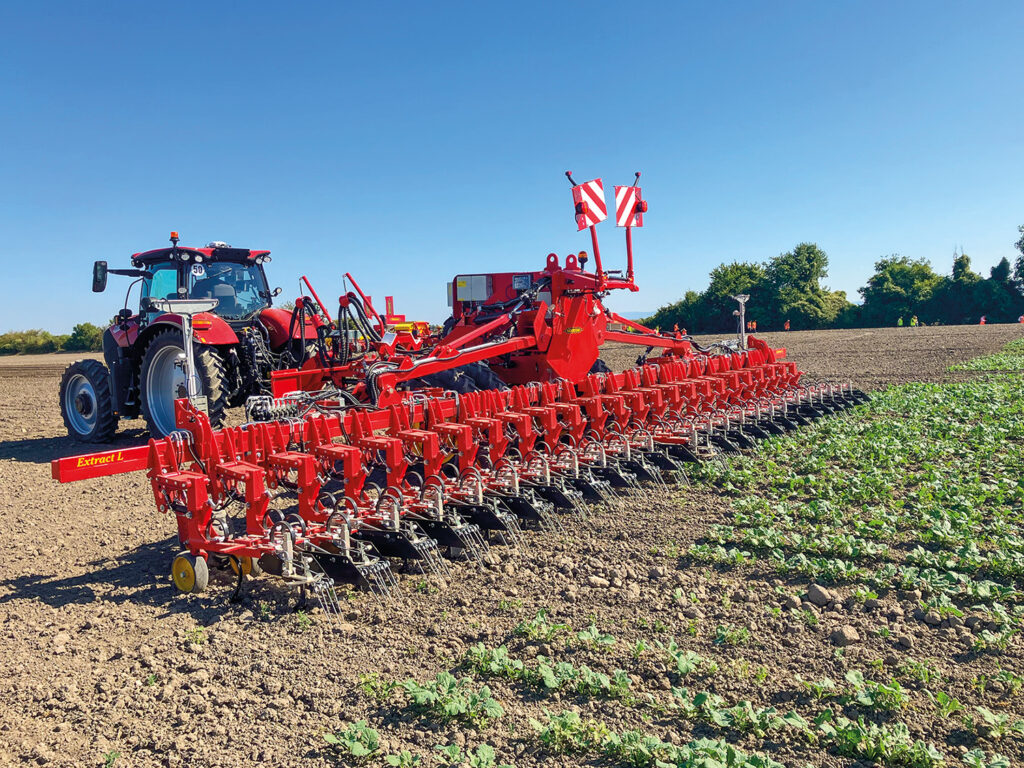
From the steel and fuel-saving potential of variable tillage to the enhanced establishment and yield prospects for more accurately-drilled crops, the focus of many of Vaderstad’s product developments unveiled at its autumn European product launch in Austria was on precision.
Varying tillage depth on the move
To this end, Vaderstad reckons its variable-depth cultivation development for its TopDown and Opus cultivators may be an option in which some purchasers on variable soil types could find significant return.
The system uses the firm’s E-Control software in conjunction with prescription maps based on factors such as soil sampling or type maps. This information is used to automatically raise and lower elements of the machine as required.
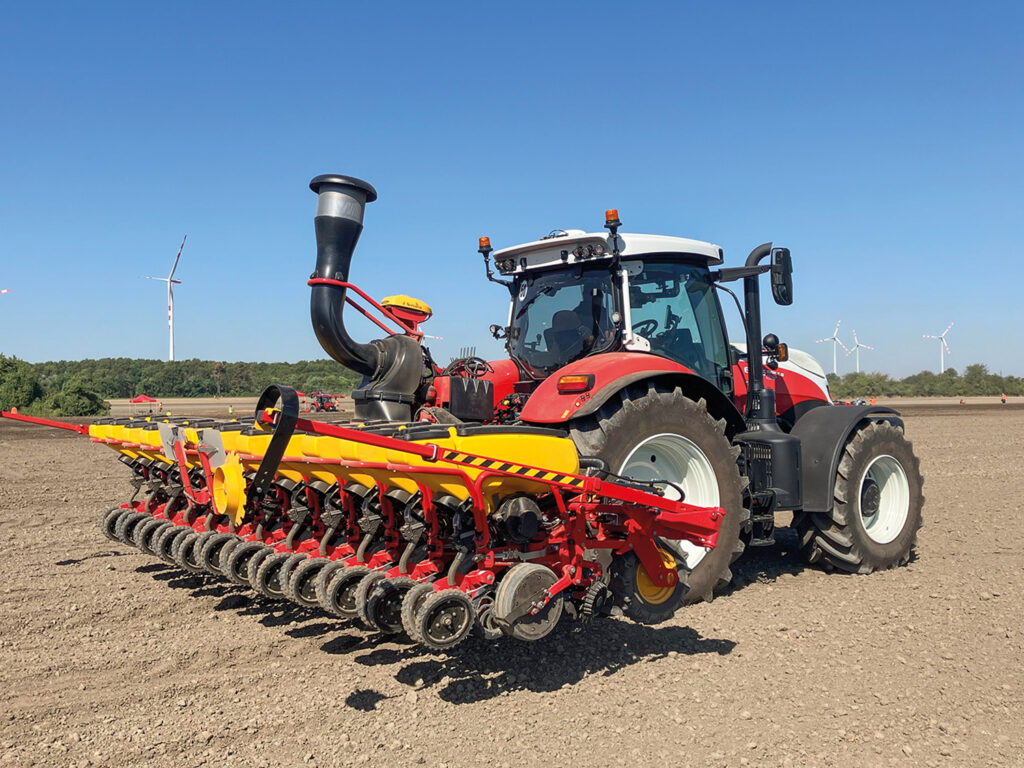
Vaderstad’s Tempo F, Tempo V and Tempo L precision drills now all feature new WSX electronic management with automated singulation, plus active hydraulic downforce.
The company believes this is the next step on from variable rate seed and fertiliser application, and that by moving soil as much as necessary but as little as possible, there is potential for significant benefits in terms of fuel use, steel wear, time, soil structure, moisture, carbon retention and workrates.
“Using E-Control, individual working depth or intensity of the discs, tines, levelling elements and packer can be set and altered before and during work, with four pre-sets available to store different machine configurations for different jobs or known areas,” said Vaderstad UK regional sales manager for the north, Ed Hutchinson.
“Adapting working depth to a yield map can also help incorporate residues more evenly and effectively, and that can bring benefits for the emergence of the following crop, which should be further helped by the enhanced slug control this also brings.
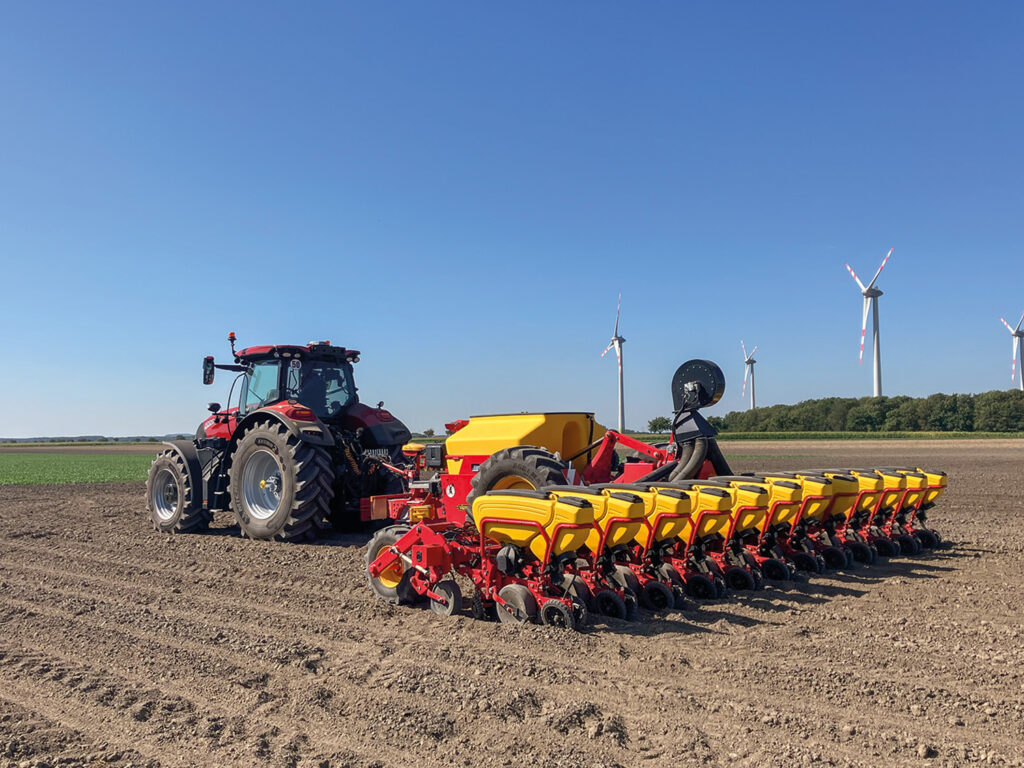
Tempo L 824 row precision drills are now available with a liquid fertiliser kit, incorporating a 2,000-litre tank.
“Reconsolidation pressure can be automatically related to working depth, soil type and moisture content, which also aids following crop emergence. With the introduction of E-Services on TopDown and Opus, these machines are fully able to use prescription maps, for on-the-go automatic machine adjustment. Using the iPad-based control E-Control, individual element working depths and the intensity of the discs, tines, levellers or packer can be manually or automatically adjusted while on the move.”
Planting with greater precision
From its precision planters to its combinable crop drills, Vaderstad also has a number of seeding developments in store for 2024. On the precision drill front there is the introduction of a liquid fertiliser kit option for the Tempo L 8–24 precision drill models.
“It’s something that, internationally, is likely to be of greatest interest to farmers in eastern Europe where the springs are late and cold, and crops such as maize and sunflowers need the best possible start,” said Vaderstad UK market development manager, Andy Gamble.
“But we may see interest from farmers in the north of the UK looking to give an early boost to crops such as maize.”
Created to be a fully integral element of the Tempo L design, at the heart of the fertiliser kit is a 2,000-litre tank. The operator enters the required application rate into the control software. Flow sensors then continuously monitor and maintain it once the machine is at work, meaning there is no need for a calibration process. On 75cm-spaced rows, rates from 30–200-litres/ha can be applied at up to 15kph without changing nozzles.
Filling equipment can be specified according to the customer’s requirements, with the possibility to fill the tank via gravity feed, an external pump or the fertiliser system’s integrated pump. Like the drill itself, the fertiliser equipment is managed through Vaderstad’s iPad-based E-Control, with filling a simple matter of the operator entering the required intake amount. Application can be in the seed row via the seed units or beside the seed row via fertiliser coulters, and as with the drill’s seed distribution, the liquid fertiliser is automatically shut off row by row on angular work.
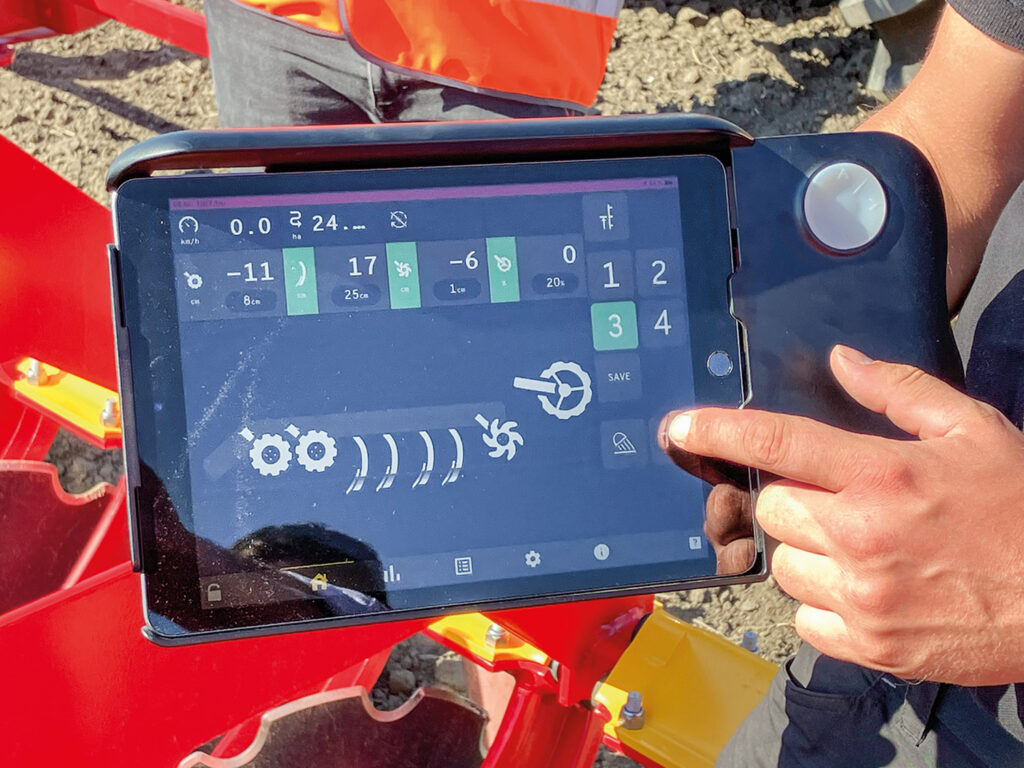
The Opus/TopDown variable-depth cultivation option uses the iPad-based E-Control for pre-work setting of individual element working depths, which then vary according to mapping.
There are also some further changes for the full range of Tempo F, Tempo V and Tempo L precision drills, which now all incorporate new WSX electronic management. The key advantage here, says Vaderstad, is that there is no need for any sort of manual setting for the singulation. Sensors in each row unit continuously monitor the singulation process, and make adjustments automatically as necessary. The company suggests the upgrade will be especially beneficial to farmers and contractors drilling a range of different crops across the season.
With an active hydraulic downforce system, optimal row unit pressure can be set and then automatically maintained to ensure consistent planting depth regardless of variations in soil type or compaction. WSX also provides curve compensation, ensuring consistent metering and accuracy during turns. Information from gyroscope-based sensors prompt adjustment of each row unit’s metering to ensure rate consistency across the planter width.
Seed Hawk developments
Vaderstad has enjoyed success in the traditional North American large trailed no-till drill market for the past 10 years since acquiring Canadian manufacturer Seed Hawk, but the European market has proved a little harder to crack. To address this, the firm has now developed a new range of its Seed Hawk no-till drills designed to more closely match European needs.
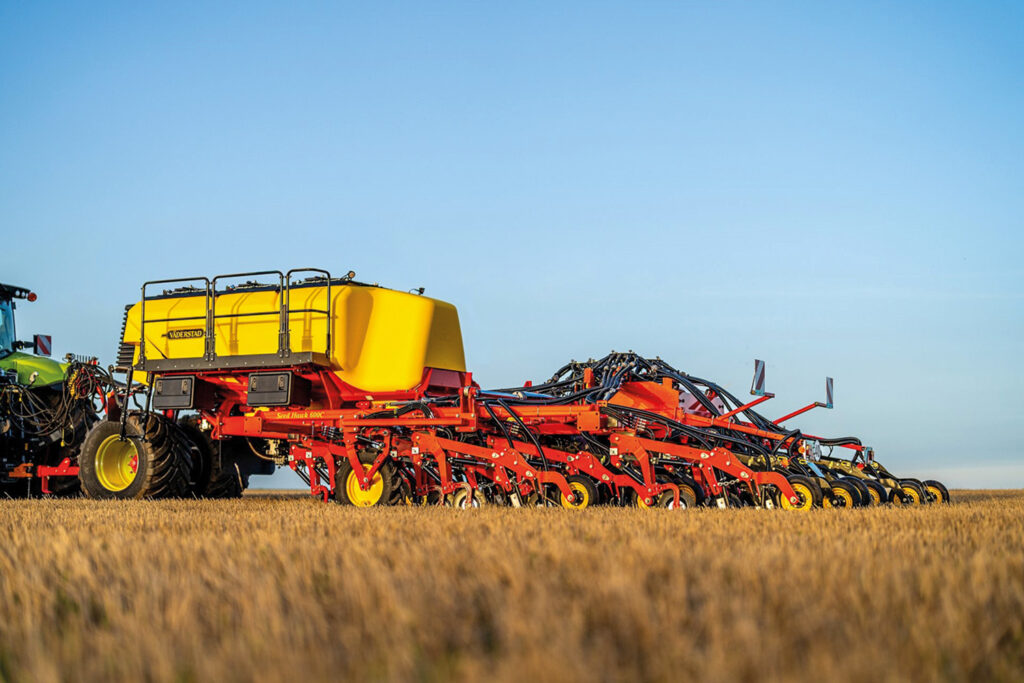
New 6–9m Seed Hawk 600–900C models engineered for Europe feature new front discs for trash/cover crop processing, and knife coulter openers.
The 6–9m Seed Hawk 600–900C models feature a new front disc option for trash/cover crop processing, and knife coulter openers designed particularly for European soils, with a dual knife system where the second knife covers the fertiliser with soil before the seed is placed, to prevent seed scorch. Up to three compartments can be specified in the seed hopper for seed, fertiliser and cover crop application, while the Fenix III metering and other functions are controlled by the iPad-based E-Control system. Operation is also via the iPad-based E-Control system.
Elsewhere on the seeding front, final design and detail for Vaderstad’s Proceed precision all-crop drill is expected at November’s Agritechnica. Said to be suited to working with cereals, oilseed rape, sugar and fodder beet, peas, maize and sunflowers, the company claims that trials in wheat suggest more consistent seed placing, so that seed rates can be halved without impacting yield. The Proceed has been tested in Sweden, the UK, France and Germany over the past four years. Post-seeding trials in winter wheat, at a seed rate of 150 seeds/m2, showed an increase of 102% in plant biomass, 72% in root biomass and 62% more shoots per plant when compared with a standard cultivator drill.
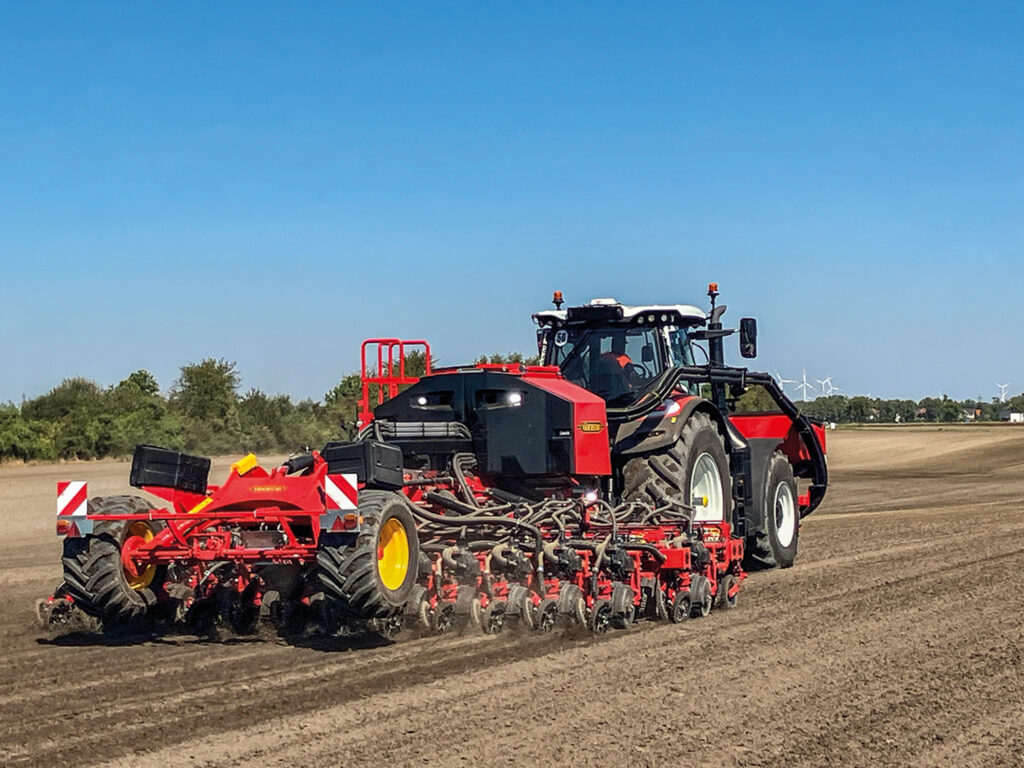
Further news on the final design details and specification for the all-crop Proceed precision drill is expected at Agritechnica in November.
Suited to drilling on ploughed ground, in min-till situations, into cover crops or direct into unmoved land, the drill’s two rows of seeding units can sow cereals at 22.5cm or 25cm spacing, 45 or 50cm for oilseed rape or sugar/fodder beet, or 75cm for maize.
Press wheels ahead of each row unit bear the machine’s weight as well as providing pre-consolidation for the coulters. The 3,000-litre seed hopper can be complemented with a front-mounted fertiliser hopper. Seed metering is via a modified version of Vaderstad’s PowerShot singulation system, with each seed leaving the short seed tube then being received by a stop wheel to ensure the selected depth is achieved across the full working width. Each row is electronically-governed, driven and controlled using the iPad-based E-Control application, with functionality including individual and sequential row shut-off, variable rate application, dynamic tramlining and individual calibration, while also offering full monitoring and control.
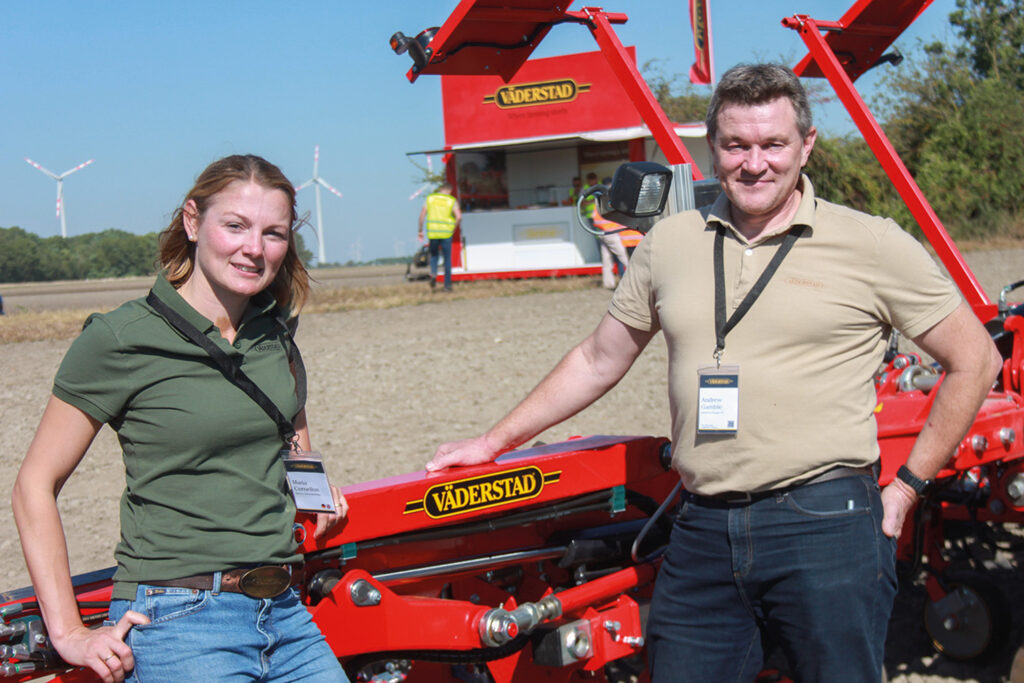
Vaderstad director of marketing, Maria Cornelius, with UK sales and marketing manager, Andy Gamble.
A new market: Mechanical weed control
Meanwhile, Vaderstad is also entering the rapidly-developing market for mechanical weed control in row crops. The company’s new Extract line of inter-row cultivators is available in two ranges: the trailed Extract L, with 16–48 rows, and the 8–26 row Extract V mounted machines. Design features include maximum ground clearance of 85cm, which Vaderstad says enables a longer, later weeding season as crops grow taller. A section lift function is guided by GPS coverage mapping to raise individual row units to 75cm above ground and prevent crop damage at headlands and in short work.
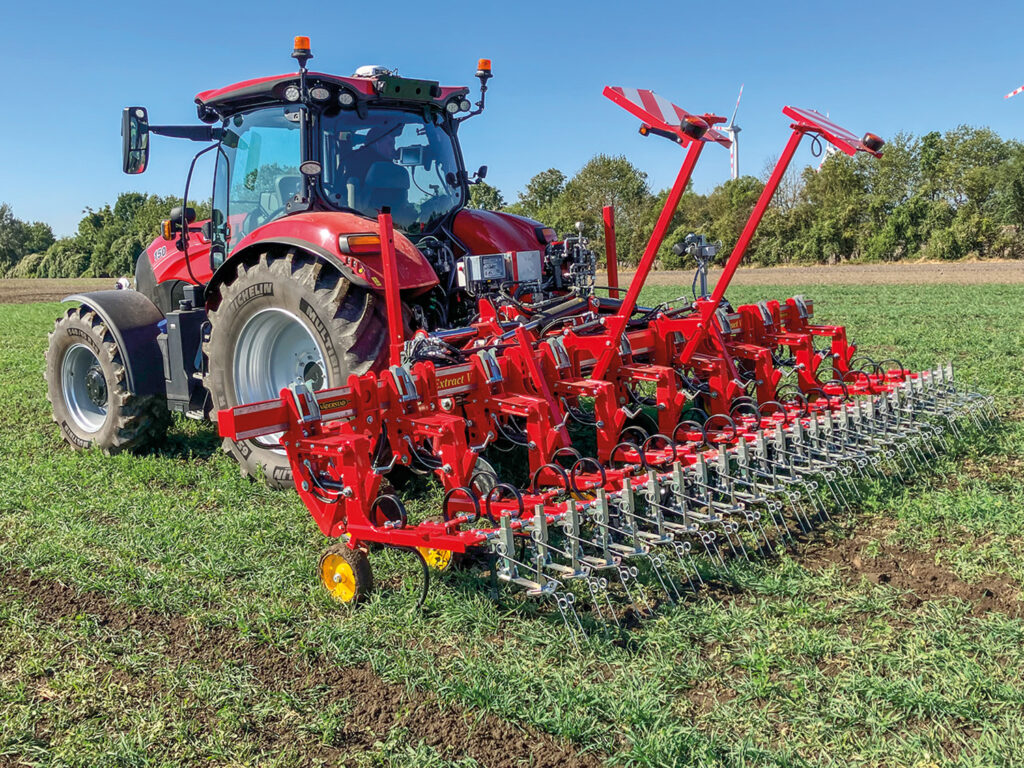
Vaderstad’s new Extract line of inter-row cultivators is available in two ranges: the trailed Extract L, with 16–48 rows, and the 8–26 row Extract V mounted machines.
The machines are available with 3D camera guidance to maintain in-row accuracy by monitoring three plant rows, meaning cultivation is possible as close as 3.0cm to the plants in each row. For weeding established crops like maize in early summer, a mechanical row steering option is available.

